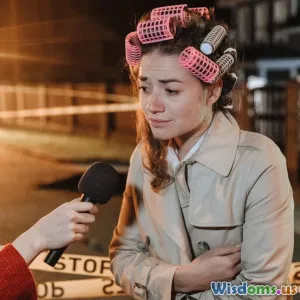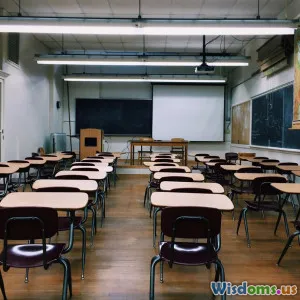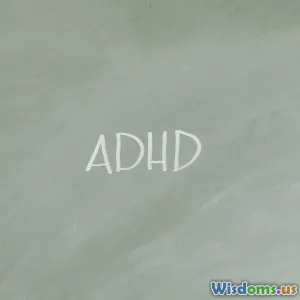
The Influence of Media on Crime Perception
9 min read Explore how media shapes public views on crime, influencing fears and policies in society. (0 Reviews)
The Influence of Media on Crime Perception
Crime shapes nationality discussions and individual safety concerns. Yet, how much do we really understand about crime compared to how it is portrayed? The media acts as the primary lens through which many people view crime; this relationship significantly molds public perception. Through this article, we will explore, with depth and clarity, how media influences crime perception, the psychological effects of these portrayals, and the real-world consequences impacting our society and policy.
Introduction: The Captivating Power of Crime on Media
Crime stories attract attention like no other news category. Sensational headlines, graphic details, and emotive storytelling captivate audiences worldwide. Since most individuals neither commit crimes nor are directly victimized, the media’s coverage becomes the main source creating their worldview on crime.
Consider the 24/7 news cycle flooded with reports on violent crimes and missing person cases. For many, these portrayals create a skewed sense of a dangerous world even when crime rates have decreased in many countries globally. This paradox—the relative drop in crime versus the perceived rise—is strongly tied to media influence.
Media Channels and Their Role in Crime Perception
Traditional News Media
Television and newspapers set the foundation for public knowledge about crime. News outlets often favor “if it bleeds, it leads,” prioritizing violent or unusual cases that generate viewer interest. For example, the coverage of high-profile cases like the O.J. Simpson trial in the 1990s showcased dramatized narratives that deeply affected public opinion.
Data backs this up: a 2018 study published in the Journal of Communication found that heavy consumption of crime news correlates with increased fear of victimization, regardless of actual crime statistics. News tends to overrepresent violent crimes while neglecting non-violent or white-collar crimes, fostering distorted perceptions.
Social Media’s Amplifying Effect
Social platforms such as Twitter, Facebook, and TikTok have dramatically altered crime reporting. These channels allow instantaneous sharing and user-generated content, which can either inform or misinform.
While social media provides faster updates and grounds for community action, it also enables misinformation proliferation. Viral videos of violent incidents or alleged crimes can spike fear locally or nationally, despite lack of context or confirmation. For instance, the viral spread of unverified claims during the 2020 George Floyd protests influenced polarized beliefs on crime and policing.
Crime Dramas and Entertainment Media
Entertainment plays a major psychological role in shaping crime perceptions. Television shows like CSI, Law & Order, and Mindhunter dramatize forensic investigations and criminal psychology but often exaggerate the ease and speed of police work.
Research from Psychology, Crime & Law journal suggests that viewers of crime dramas tend to overestimate crime prevalence and trust forensic evidence disproportionately, a phenomenon known as the "CSI effect." This distorts citizen expectations of the justice system, sometimes influencing jury decision-making.
Psychological Impacts of Media Crime Exposure
Cultivation Theory
American sociologist George Gerbner’s cultivation theory explains how long-term exposure to media content shapes audience attitudes. Constant coverage of crime in exaggerated ways cultivates a "mean world syndrome"—a belief that the world is more dangerous than it statistically is.
A study from the American Psychological Association highlights that heavy news consumers often exhibit heightened anxiety about personal safety. This fear can affect daily behaviors, such as increased security measures or avoidance of public spaces.
Confirmation Bias and Selective Exposure
People often seek media that aligns with existing beliefs, reinforcing stereotypes or fears about crime.
For example, racial or immigrants’ crime stereotyping is amplified when media disproportionately reports crimes involving specific groups, without proportionate context. This fuels systemic bias and social division.
Real-World Consequences of Media-Driven Crime Perceptions
Influence on Public Policy
Public opinion shaped by media plays a crucial role in criminal justice policies. Politicians often respond to constituents’ fears driven by sensational crime stories.
The 1990s “tough on crime” sentencing laws reflect this dynamic: widely publicized violent crimes led to mass incarceration policies that disproportionately affected minority communities. Scholars argue that these laws were less about actual crime trends and more about reacting to media amplifications.
Impact on Law Enforcement Practices
Media scrutiny translates into pressure on police departments. Agencies may adjust strategies to focus on highly visible crimes or improve community relations to counter negative portrayals.
Conversely, sensationalism around crime can sometimes lead to aggressive policing tactics or prioritization of arrests over community trust, as departments seek to manage public perception.
Social and Community Effects
The cumulative effect of media-driven fear can damage social cohesion. Neighbourhoods portrayed repeatedly as dangerous may suffer economic disinvestment and population flight.
Communities may also experience stigmatization, affecting residents emotionally and economically. The cycle perpetuates when fewer resources lead to genuine rises in crime, confirming media narratives.
Conclusion: Navigating Media Influence for an Informed Perspective
Media undeniably shapes how crime is perceived, often amplifying fears beyond objective realities. Understanding this influence is vital for public awareness and responsible journalism.
Being critical of media sources, consuming diverse information, and advocating for balanced reporting can help mitigate unwarranted fears. Moreover, policymakers and law enforcement should rely on empirical evidence rather than media-driven public pressure to address crime effectively.
Knowledge empowers citizens to decipher fact from sensationalism and fosters a more nuanced conversation around crime and justice. In a media-saturated world, cultivating media literacy is not just beneficial, it is essential for the fabric of a safe and just society.
References:
- Dowler, K. (2003). Media consumption and public attitudes toward crime and justice: The relationship between fear of crime, punitive attitudes, and perceived police effectiveness. Journal of Criminal Justice and Popular Culture.
- Gerbner, G., Gross, L., Morgan, M., & Signorielli, N. (1986). Living with television: The violence profile. Journal of Communication.
- Surette, R. (2015). Media, Crime, and Criminal Justice. Cengage Learning.
- Chiricos, T., McEntire, R., & Gertz, M. (1997). Reporting on race and crime: Part I—Developing a measure of local television news coverage. Crime & Delinquency.
- Dowler, K., & Zawilski, V. (2007). Public perceptions of police misconduct and discrimination: Examining the impact of news media consumption. Journal of Criminal Justice.
Rate the Post
User Reviews
Popular Posts





















